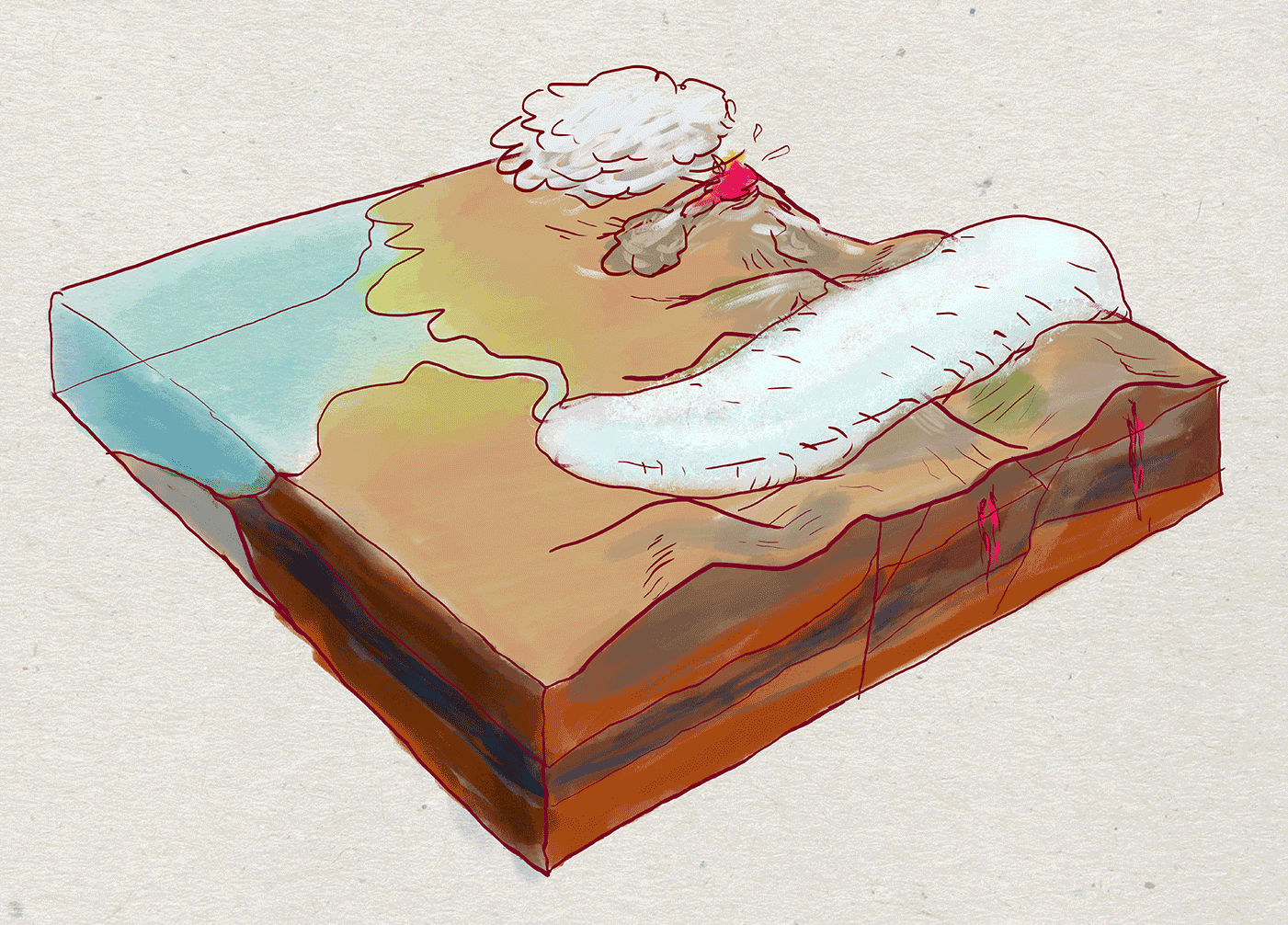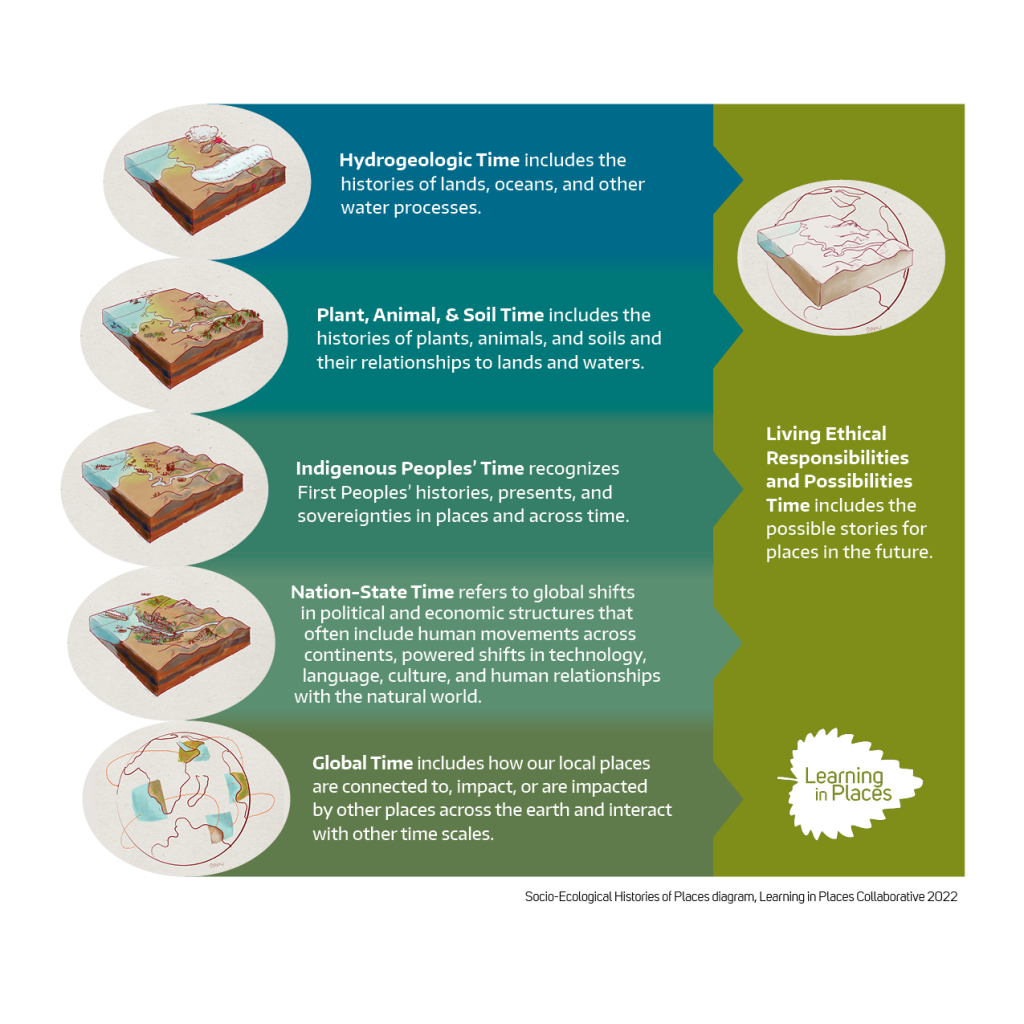Learning Frameworks Overview
The socio-ecological histories of places framework involves thinking across six time scales. These provide a framework for supporting learner sense-making within and across time and place. A key reason to engage learners in this thinking is that it will support them in understanding how things may have changed slowly or rapidly, and how decisions lead to ethical, just and sustainable futures and possibilities.
Why is thinking about histories of places important?
There are many time scales that make places what they are today, and what they could be in the future. Histories span across land, plants, animals, and human communities over time. Thinking within and across many time scales is necessary to understand the complexity of socio-ecological systems more deeply. Research shows that thinking across time scales is an important practice of scientists, and that they need to understand the geologic and past social contexts of the land they are studying in order to understand the land as it is today (and what it might become in the future). Understanding social systems also requires thinking across scales. For example, understanding socio-ecological decisions that people make requires integrating different layers of time with respect to how social systems intersect with ecological systems.

Socio-ecological Histories of Places Framework
The socio-ecological histories of places framework involves thinking across six time scales. These provide a framework for supporting learner sense-making within and across time and place. A key reason to engage learners in this thinking is that it will support them in understanding how things may have changed slowly or rapidly, and how decisions lead to ethical, just and sustainable futures and possibilities. Learners should also reason across multiple time scales to understand the impacts of slow or rapid change in any one of these scales affected/affects another. For example, learners can wonder about how rising temperatures(compared across hydrogeologic, nation-state, and global histories, for example) have impacted and are impacting plant, animal, and soil time.

Suggested Citation
Learning in Places Collaborative. (2022). Framework: Socio-Ecological Histories of Places Framework: Supporting Sense-Making and Decision-Making toward Ethical Futures. Bothell, Seattle, WA & Evanston, IL: Learning in Places.